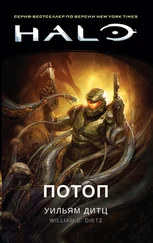The route Mac had chosen was going to take them northwest on Highway 60 to 191 and Interstate 40. They would follow it into New Mexico but stay west of the border with Texas because that area was subject to raids.
The gray clouds were low, and the source of occasional bouts of sleet, as the mercenaries motored up through Show Low and St. Johns. As usual, the Marauders had to share the road with all manner of cars, steam-powered trucks, pedal-powered carts, horse-drawn buggies, and, on that particular day, a motorized skateboard! Its rider was wearing a football helmet and knee pads. He waved cheerfully as he zipped past.
But many of the other vehicles had to be forced into the slow lane by Private Atkins, who was riding shotgun on Roller-One and spent most of his time shouting through a megaphone.
None of which surprised Mac. What did surprise her was the volume of traffic. There was more of it, as if the nation’s pulse had started to quicken, and things were improving.
Could President Sloan take credit for that? Or had the postcatastrophe shock begun to wear off? Resulting in more activity? The two theories weren’t mutually exclusive, however, so maybe there was some truth to both of them.
They pulled into a rest area just after noon to eat lunch. Then, upon returning to the freeway, the Marauders were forced to pass many of the same slow movers they’d overtaken earlier. The convoy was ten miles outside of Albuquerque when Sergeant Esco warned Mac about the roadblock ahead. “Two tanks are sitting in the middle of I-40 with concrete barriers behind them. It looks like some of the traffic is being allowed to enter the city, but most of it is being shunted onto a side road. Over.”
“Are there any signs of combat? Over.”
“No. Traffic is stop-and-go. But other than that, everything looks good. Over.”
“Can you tell who the tanks belong to?”
“No. But the people around them look more like cowboys than soldiers. Over.”
“Okay… Well done. Follow the detour and see where it goes. Over.”
“Roger that,” Esco replied. “Over.”
The UAV pilot called in fifteen minutes later to tell Mac that the detour was going to take them around the city to a point where they could access I-25 north. It was possible to swing wide and use a secondary road to circumvent the area, but time was money… And the Marauders had to conserve fuel. So Mac chose to remain on 40 and deal with the roadblock.
It wasn’t long before Roller-One came up on the traffic jam. It was start and stop from that point forward, a fact well-known to local entrepreneurs, who sold all manner of goods and food from brightly painted shacks that lined both sides of the highway.
Doc Hoskins was worried about food safety, and Mac was worried about security, so the Marauders weren’t allowed to leave the convoy. It was a decision that was certain to generate a lot of griping—but it was for their own good.
Eventually, after forty-five minutes of incremental progress, the roadblock appeared. A professionally painted sign hung over the freeway. It read WELCOME TO THE NAVAHO NATION and seemed to suggest that Native Americans were in charge of Albuquerque.
The tanks Esco had mentioned were parked so they could fire on the highway, and from where Mac was sitting, it looked as if both 105mm cannons were aimed at her .
Two dozen soldiers were standing around burn barrels, assuming that was the correct way to classify the men and women who were dressed cowboy-style and armed with a wild assortment of weapons. Three were mounted on horses and appeared to be on standby, should there be a need to enter traffic and handle a dispute.
A man stopped to talk to the soldiers in Roller-One before making his way back to the Humvee. Mac got out and circled around the front of the vehicle. The local was wearing a flat-brimmed hat, sheepskin coat, and faded jeans. A pair of beat-up boots completed the outfit. Teeth flashed as he smiled. “Are you Captain Macintyre?”
“Yes, sir.”
The man looked back along the column. “That’s a lot of firepower, Captain. Where are you headed?”
“Fort Knox, Kentucky.”
His eyes were like gun barrels. “Why?”
“We’re under contract to the federal government. I can show you the paperwork if you wish.”
The man smiled. “Why bother? I wouldn’t know if the document was real or forged. I hear the North is going to attack the South.”
Mac shrugged. “It’s possible.”
“We’d like to see that,” the man said. “The Confederates don’t like us—and we don’t like them. Will you be allowed to speak with the president?”
“I doubt it.”
“Well, if you do, tell him this: You tell him that Chief Natonaba and the Navaho Nation will stand next to him in battle. But if he tries to take Albuquerque, we will fight him to the death. Got it?”
Mac thought about Secretary Garrison. Maybe she could pass the message to him. “Yes, Chief… I’ve got it.”
“Good. You have a nice day, Captain. Walk in beauty… And remember the old ones.” And with that, he turned away.
Mac returned to the Humvee, got in, and gave Roller-One permission to proceed. The detour took them onto Atrisco Vista Boulevard, which led them across arid land and past an airport. Then, after a long and winding journey through some suburbs, the mercenaries were able to get on I-25 and follow it north.
It was late afternoon by the time the Marauders entered the bedroom community of Rio Rancho. Based on the intel provided by Esco, Mac sent Roller-One ahead to inspect a possible bivouac site just east of the freeway, and directly across from a casino. The report came in ten minutes later. The site didn’t have access to water but it was unoccupied, and only yards from an on-ramp. And that would make for a quick start in the morning.
The last vehicle in the convoy was towing a M149A2 “water buffalo.” That gave Mac the freedom to spend a night without a water source, so she gave the go-ahead. It was her desire to have all the unit’s defenses in place before darkness fell. And, thanks to her NCOs, they were.
The night passed without incident, and the convoy was back on the road by 0630 in the morning. The plan was to follow I-25 north into Colorado. Then, near Trinidad, Mac was going to take the unit off I-25 and follow a secondary highway to the northeast.
The Marauders made good progress over the next couple of days. From Rio Rancho they drove to Limon, Colorado, where they spent the night in a deserted RV park. From there it was a five-hour trip to Junction City, Kansas. It was a small town, with an active militia, the leader of which was none too happy about the prospect of allowing a heavily armed group to stay overnight. But unlike Chief Natonaba down in Albuquerque, he found the written contract signed by Interim Secretary of Defense Garrison to be very reassuring. He even went so far as to invite Mac and her officers to dinner in his home.
Mac didn’t have any officers other than Dr. Hoskins, so she took Sergeants Esco and Poole along as well, leaving Ralston in command. It was an excellent, home-cooked meal. And Mac felt guilty about dining on meat loaf and mashed potatoes while the rest of the unit ate MREs.
The Marauders were on I-70 just after dawn and entered the outskirts of Kansas City three hours later. A checkpoint sat astride the freeway and was defended by a mercenary outfit called the Devil’s Kin. The Devs had six Bradleys. So when one of the mercs ordered Roller-One to pull over, the driver had no choice but to obey. The rest of the column followed, and Mac placed them on high alert.
If memory served, a hard-fought Civil War battle had taken place nearby. Union forces eventually won and forced Confederate General Samuel R. Curtis to retreat. Was the city still in Union hands? Mac discovered that it was.
Читать дальше

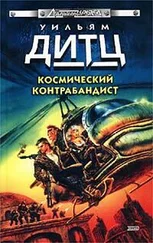
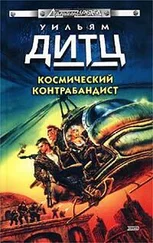

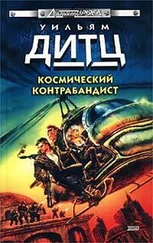
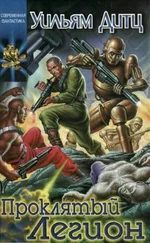
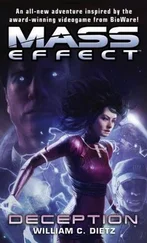

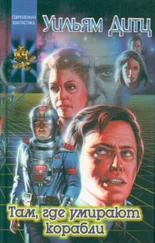
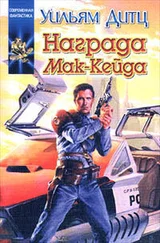
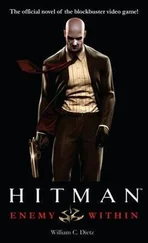
![Уильям Дитц - Избранные произведения в одном томе [Компиляция]](/books/389750/uilyam-ditc-izbrannye-proizvedeniya-v-odnom-tome-k-thumb.webp)
